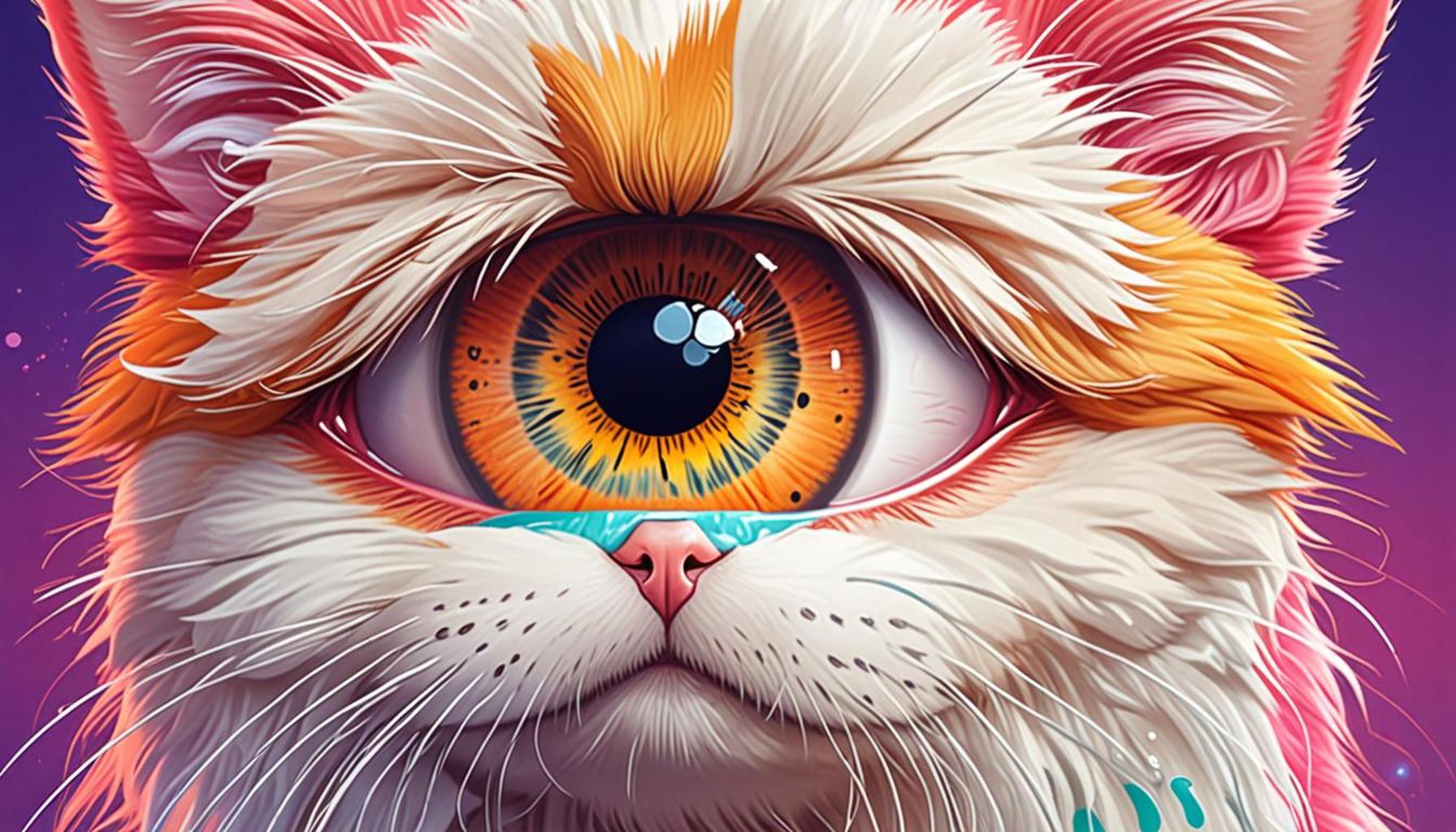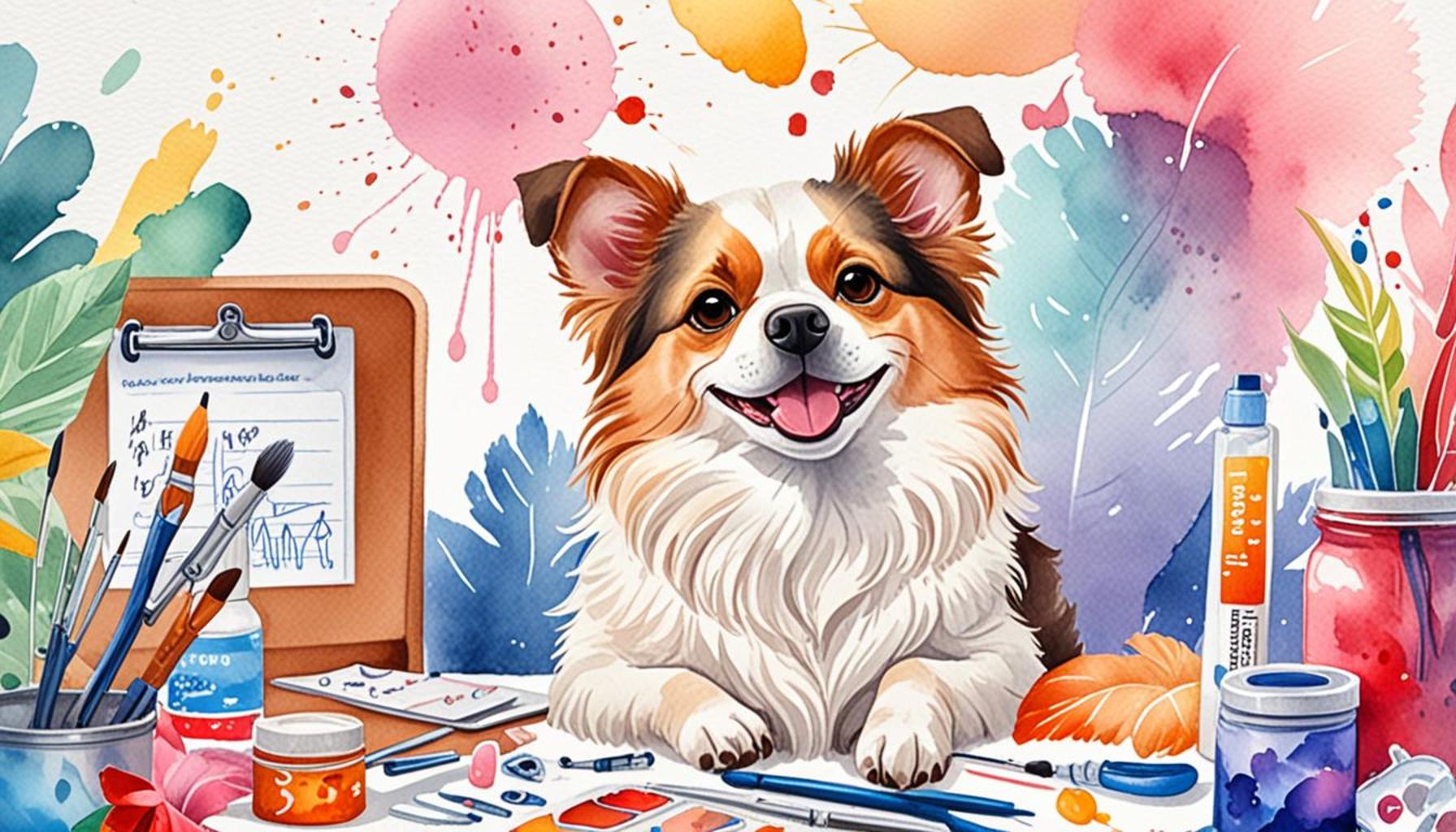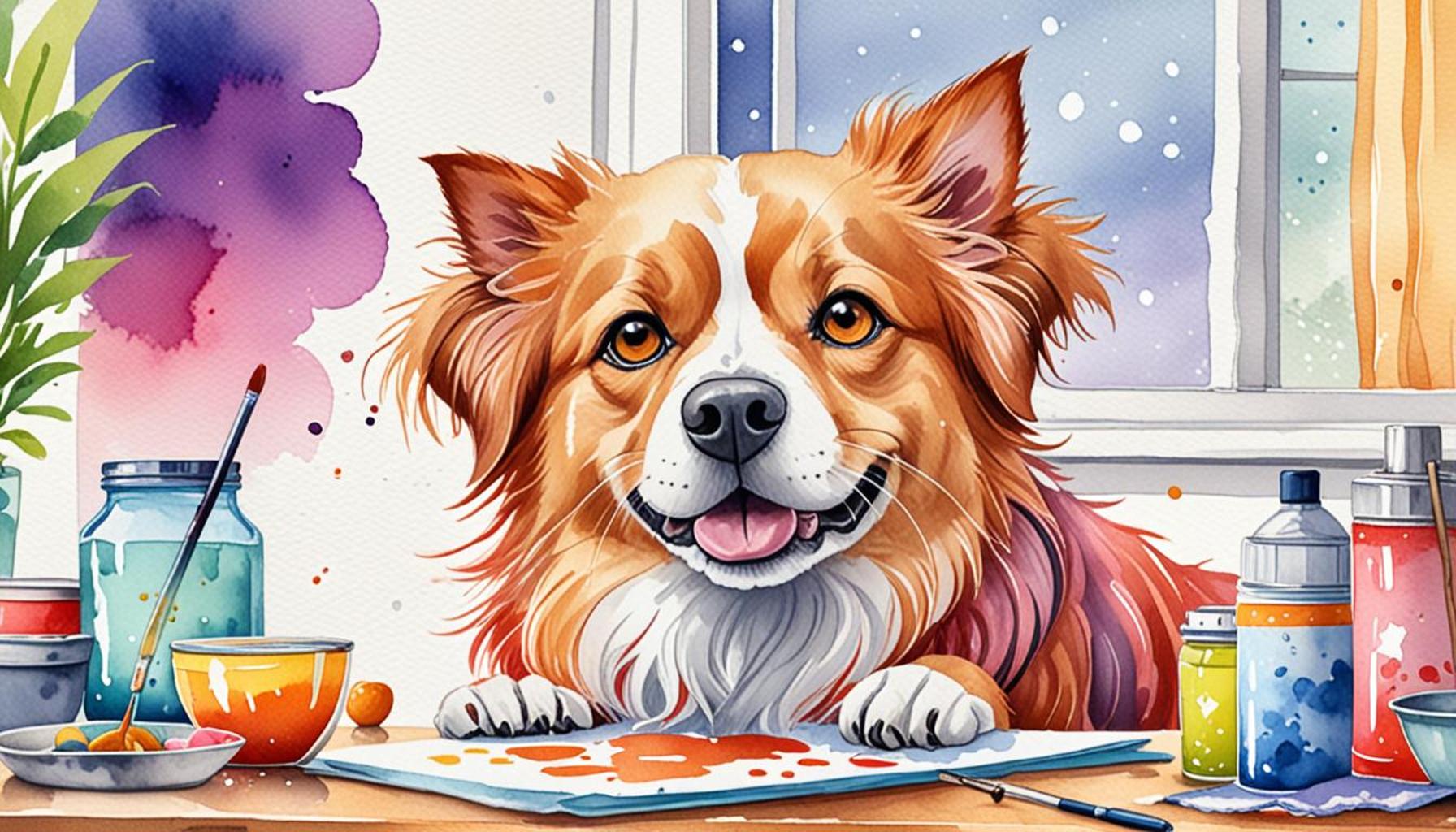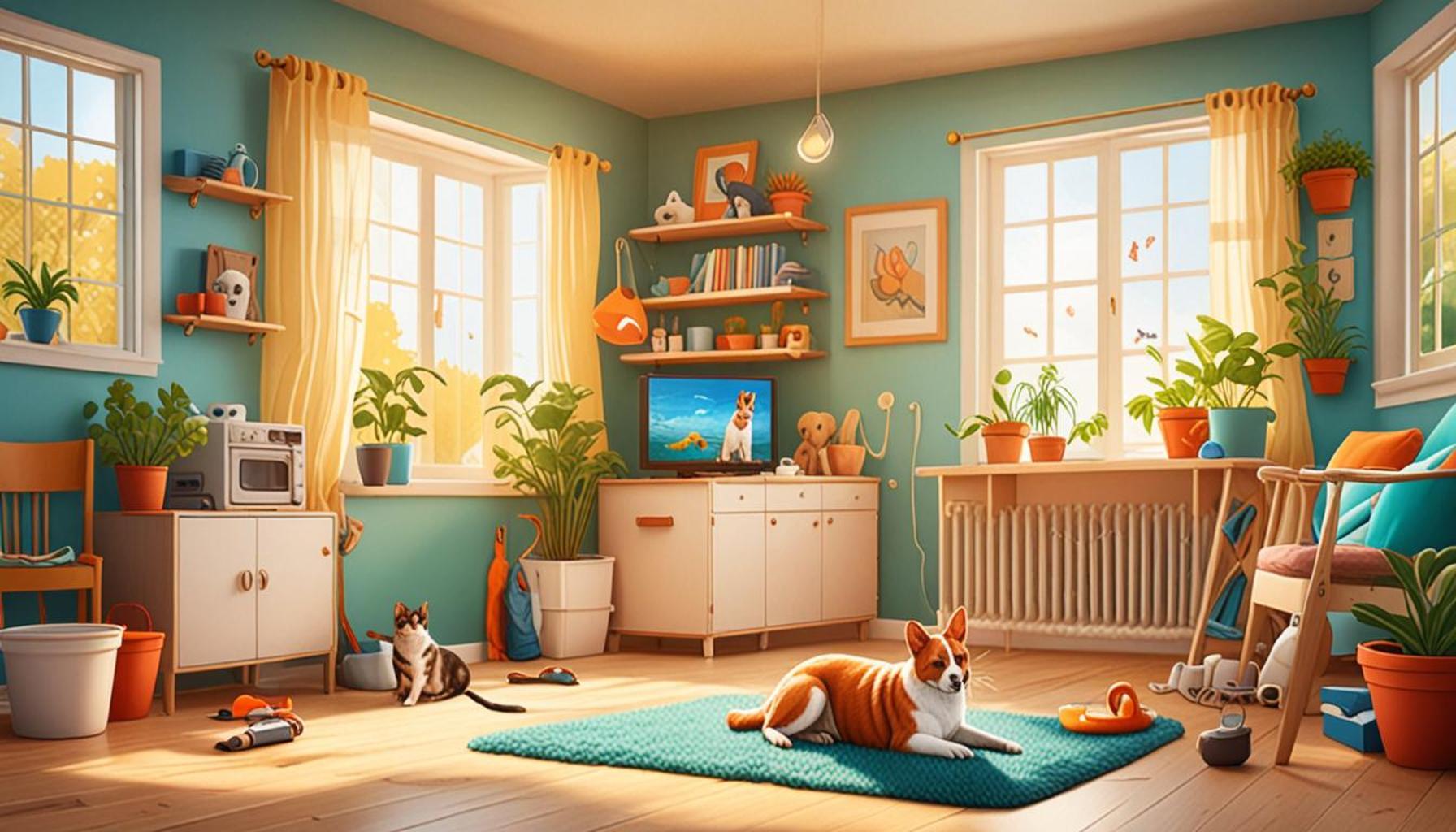Tips for Maintaining Pets’ Eye Health: Warning Signs and Essential Care

Understanding the Importance of Eye Health in Pets
Our pets, beloved members of our families, express a wealth of emotions through their eyes. Ensuring their eye health is crucial for their overall well-being. Regular care and vigilance can make all the difference in preventing serious health issues.
Why Monitor Your Pet’s Eyes?
Pets, much like their human companions, are susceptible to a range of eye conditions that can affect their quality of life. Awareness of potential problems not only empowers pet owners but can lead to early intervention, which is key to preventing permanent damage. For example, dogs and cats can develop conditions such as cataracts, glaucoma, and dry eye syndrome, each of which may severely impact vision if left untreated.
- Vision impairment: Many pets may not exhibit noticeable signs of vision loss until substantial damage has occurred. For instance, a dog may slowly adapt to diminishing eyesight by relying more on their sense of smell and hearing, making it challenging to identify the problem until it’s more advanced.
- Infections: Both cats and dogs can suffer from infections such as conjunctivitis or keratitis. Spotting symptoms early, such as redness or discharge, can prevent escalation into more serious conditions requiring extensive veterinary intervention.
- Chronic conditions: Certain breeds are predisposed to hereditary eye diseases. For example, breeds like the Cavalier King Charles Spaniel and the Boston Terrier are known to be more susceptible to breed-specific eye issues, underscoring the importance of regular check-ups.
Key Warning Signs of Eye Problems
Recognizing warning signs is essential for maintaining your pet’s eye health. Pet owners should remain vigilant and keep an eye out for indicators that may require professional evaluation.
- Redness or inflammation: This could indicate allergies, irritants, or infections that may need immediate medical attention.
- Excessive tearing: Often a sign of irritation or blockage that could lead to more serious complications if not addressed.
- Cloudy appearance: A cloudy or opaque look might signify cataracts or other serious conditions that require prompt evaluation to prevent irreversible damage.
By understanding these warning signs and implementing vital care routines, you can significantly contribute to your pet’s eye health. Simple steps such as regular checkups, prevention through vaccinations, and keeping your pet safe from potential injuries in the environment can help maintain their vision and comfort.
Stay tuned to discover more tips and strategies for maintaining those sparkling eyes that reflect your pet’s joy and vitality. Investing time in your pet’s eye health today could lead to a lifetime of happy moments and adventures together.

DISCOVER MORE: Click here for essential tips
Essential Care Practices for Your Pet’s Eye Health
Maintaining your pet’s eye health requires more than simply watching for warning signs; it involves a proactive approach that includes regular care, proper nutrition, and environmental considerations. Paying close attention to these areas can help in promoting good vision and preventing potential issues.
Routine Eye Check-ups
Regular veterinary check-ups are the cornerstone of preventive eye care. During these appointments, veterinarians perform comprehensive eye exams to identify any issues before they escalate. Many pet owners may not realize that chronic conditions can go unnoticed, leading to extensive complications down the road. Schedule check-ups at least once a year for healthy pets and more frequently for those showing early signs of eye problems or those belonging to breeds predisposed to eye diseases.
Importance of a Balanced Diet
The diet you provide your pet plays a pivotal role in their overall health, including their eyes. Foods rich in vitamins and antioxidants, such as Vitamin A and Omega-3 fatty acids, can bolster eye health. Consider integrating options like carrots, blueberries, and fish into your pet’s meals. Some pet foods are specifically formulated to support ocular health, so consulting with your veterinarian about the best diet can make a significant impact.
Environmental Awareness
The environment can also take a toll on your pet’s eyes. Dust, chemicals, and pollen can cause irritation or allergic reactions. Pet owners should be mindful of the areas where their pets roam and make efforts to minimize exposure to harmful substances. Avoid using harsh cleaning products or chemicals that can lead to eye injuries. Additionally, providing a safe play area can help prevent accidents that might lead to eye trauma. Here are some proactive measures you can take to create a safe environment:
- Regular cleaning: Keep your home free from dust and debris that can irritate your pet’s eyes.
- Protective gear: For pets that enjoy outdoor activities, consider using protective goggles specifically designed for pets during high-risk activities such as hiking or biking.
- Monitor interactions: Supervise your pet during playdates or interactions with other animals to avoid any roughhousing that may result in eye injuries.
By integrating these essential practices into your pet care regime, you create a comprehensive plan for maintaining optimal eye health. Taking actionable steps to prevent eye problems and ensuring regular monitoring will significantly enhance your pet’s quality of life, allowing them to continue sharing in the joy and adventures of life with you.
Warning Signs of Eye Problems in Pets
Being vigilant about your pet’s eye health is crucial for early detection of potential issues. One of the first steps in maintaining your pet’s eye health is recognizing the warnings signs that indicate a possible problem. Common signs include excessive tearing, redness in the eyes, squinting, and any discharge. If you notice that your pet is consistently rubbing their eyes or appears to be in discomfort, it’s essential to consult a veterinarian promptly.Another key symptom is a change in your pet’s behavior related to their vision. If your pet seems disoriented or hesitates before jumping or navigating around, it may indicate a vision issue needing immediate attention. Additionally, cloudy or cloudy eyes, especially in older pets, can signify conditions such as cataracts or glaucoma. This highlights the importance of regular eye examinations, particularly for senior pets or breeds predisposed to eye issues.
Essential Care for Your Pet’s Eyes
Preventative care plays a critical role in maintaining your pet’s eye health. Regular veterinary check-ups are paramount, as they allow for comprehensive examinations to detect any potential issues before they escalate. Keeping your pet’s living environment clean is also advisable, as dust, allergens, and foreign objects can contribute to eye problems.Utilizing protective eyewear during outdoor activities can prevent injury and block harmful UV rays, especially for pets with light-colored or sensitive eyes. Furthermore, maintaining a balanced diet rich in vitamins A and C can promote better eye health, as these nutrients are essential for vision. Omega-3 fatty acids, found in fish oil, can also support retinal function and overall eye health.Engaging in regular grooming, particularly for breeds with long fur, helps keep the hair away from the eyes, reducing irritation and the risk of infection. Remember that if you observe any changes in your pet’s eye health, such as unusual coloration, swelling, or persistent discharge, a veterinarian’s evaluation is crucial for maintaining their long-term health.
| Category | Details |
|---|---|
| Warning Signs | Excessive tearing, redness, and squinting signal possible eye issues. |
| Essential Care | Regular vet check-ups and a balanced diet are key for eye health. |
DISCOVER MORE: Click here
Recognizing Warning Signs of Eye Problems
Equally as crucial as preventive care practices is the ability of pet owners to recognize warning signs indicating potential eye issues. Due to their instinctual nature, pets often hide discomfort, making it imperative for owners to be vigilant. Familiarizing yourself with the common symptoms of eye problems can facilitate early diagnosis and treatment.
Common Symptoms to Watch For
Regular observation of your pet’s eyes can make a significant difference in their overall eye health. Look for the following warning signs that may indicate a more serious condition:
- Redness or Swelling: If your pet’s eyes appear red or swollen, this may indicate inflammation or infection.
- Excessive Tearing: While some tearing is normal, an increase in watery discharge can signify allergies, infections, or other issues.
- Persistent Scratching or Rubbing: If your pet is frequently pawing at their eyes, it may signal irritation or discomfort that requires attention.
- Cloudiness or Changes in Eye Appearance: Any noticeable changes in the color or clarity of your pet’s eyes could indicate serious medical conditions, such as cataracts or glaucoma.
- Behavioral Changes: A sudden avoidance of bright light, bumping into objects, or any noticeable changes in visual behavior warrants immediate veterinary attention.
Early detection is vital in preventing significant health problems, and if you observe any of these symptoms, consult your veterinarian as soon as possible. They can perform specialized tests to determine the underlying cause and initiate appropriate treatment.
Creating a Pet Eye Care Routine
Just as humans maintain a daily hygiene routine, establishing a regular eye care routine for your pet is essential. Simple actions can greatly reduce the risk of eye problems:
- Routine Eye Cleaning: Gently wipe away any discharge from your pet’s eyes with a clean, damp cloth. Use separate portions of the cloth for each eye to prevent cross-contamination.
- Regular Grooming: For long-haired breeds, consider regular grooming to prevent hair from irritating the eyes. Keeping hair trimmed around the eyes can help reduce the risk of injury or obstruction.
- Eye Ointments or Drops: If recommended by your veterinarian, use prescribed eye ointments or drops as part of your pet’s routine to combat dryness or irritation.
Understanding Breed-Specific Concerns
Certain breeds are predisposed to specific eye conditions, making it imperative for owners to understand their pet’s unique needs. For instance, flat-faced breeds such as French Bulldogs and Persian Cats are more vulnerable to eye issues like corneal ulcers and proptosis due to their eye structure. On the other hand, breeds such as Collies and Boxers are at a higher risk for inherited conditions like progressive retinal atrophy.
Researching your pet’s breed specificities and communicating these details to your veterinarian can enhance preventive care. By being proactive in monitoring and maintaining your pet’s eye health, you foster an environment that allows for better prevention, ultimately improving your furry friends’ overall well-being and quality of life.
Dive deeper: Click here to learn more about your pet’s mental health
Conclusion: Prioritizing Your Pet’s Eye Health
Ensuring optimal eye health in your pets is not merely a matter of routine; it is a critical aspect of their overall well-being. By implementing preventive measures and remaining vigilant for the warning signs of potential eye issues, pet owners can play an active role in safeguarding their furry companions against vision-related ailments. Regular eye cleaning, grooming, and tailored eye care routines can significantly reduce the likelihood of developing serious conditions.
Moreover, understanding the nuances of your pet’s breed-specific predispositions is essential. Certain breeds may be more susceptible to eye disorders, emphasizing the need for dedicated attention to their unique needs. Building a strong relationship with your veterinarian and maintaining an open line of communication about any observed changes in your pet’s vision or eye appearance is crucial for early diagnosis and effective treatment.
Ultimately, early detection combined with consistent care can lead to a healthier, happier life for your pet. Through acknowledging the common symptoms of eye problems and being proactive in administering care, you empower yourself as a responsible pet owner, helping to ensure that your beloved animal can see the world clearly and enjoy every moment with you. Take the time to explore more resources on pet eye care, as your vigilance today can prevent unwanted surprises tomorrow and enhance your pet’s quality of life dramatically.


